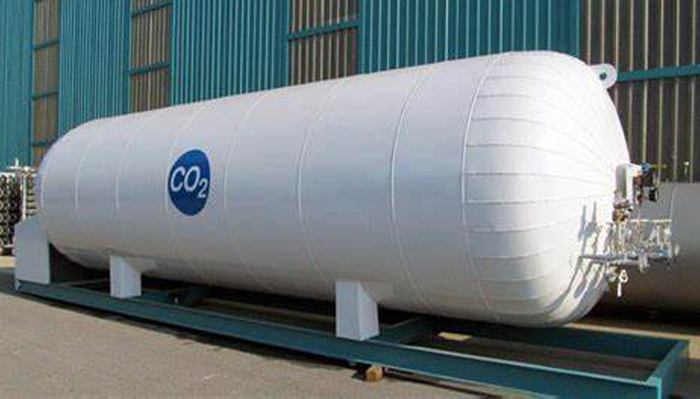Product Category
How to reduce the liquid storage loss of the carbon dioxide storage tank?
Date: Nov 28, 2019

The location of liquid CO2 storage tanks in the chemical industry cannot be ignored. Many people will inevitably encounter problems when using LCO2 storage tanks , such as reducing the amount of liquid stored in carbon dioxide storage tanks. How can we resolve this phenomenon?
Since the vapor density of a stock solution in a chemical storage tank is mainly determined by the composition of the stock solution, it is usually unchanged. So, how to reduce the concentration of the stock solution and the volume of the discharged steam mixture to reduce the consumption?
First of all, to establish a sound chemical storage tank supervision system, reduce operating links, and reasonably use chemical storage tanks, the amount of large breaths for liquid storage during transportation should be reduced to a small amount, thereby reducing intermediate links and strengthening chemical storage. The management of storage tanks should minimize the need to replace liquid CO2 storage tanks, reduce the empty capacity of carbon dioxide storage tanks, and maintain high liquid CO2 storage tanks. Secondly, rationally arrange the storage operations of chemical storage tanks, reduce breathing loss, strengthen equipment maintenance, and strictly implement operating procedures. Use larger breaths and exhausts to offset smaller breaths and exhausts. When the temperature rises or the chemical storage tank is to be vented, the oil in the chemical storage tank can be arranged.
Secondly, rationally arrange the storage operations of chemical storage tanks, reduce breathing loss, strengthen equipment maintenance, and strictly implement operating procedures. Use larger breaths and exhausts to offset smaller breaths and exhausts. When the temperature rises or the chemical storage tank is to be vented, the oil in the chemical storage tank can be arranged.
In general, as long as hair fluid is used to reduce the pressure inside the chemical storage tank, the amount of loss can be reduced. Not only that, but also check the tightness of the chemical storage tank, such as whether the breathing valve is malfunctioning. When using manual inspection, in addition to the equipment, the inside and outside of the chemical storage tank should be minimized after inhalation in the morning or evening. At present, the intake is small and the exhaled oil and gas concentrations are low. The amount of loss is small.
In addition, the gas space on the storage surface of the LCO2 storage tank must be eliminated, and an outer floating roof and an inner floating roof are now used. This eliminates not only the small breathing loss of the chemical storage tank, but also the large breathing loss of the chemical storage tank. In addition, reducing the temperature and changes in chemical tanks, or using highly reflective anti-corrosive coatings, can also reduce losses to a certain extent.
Since the vapor density of a stock solution in a chemical storage tank is mainly determined by the composition of the stock solution, it is usually unchanged. So, how to reduce the concentration of the stock solution and the volume of the discharged steam mixture to reduce the consumption?
First of all, to establish a sound chemical storage tank supervision system, reduce operating links, and reasonably use chemical storage tanks, the amount of large breaths for liquid storage during transportation should be reduced to a small amount, thereby reducing intermediate links and strengthening chemical storage. The management of storage tanks should minimize the need to replace liquid CO2 storage tanks, reduce the empty capacity of carbon dioxide storage tanks, and maintain high liquid CO2 storage tanks.

In general, as long as hair fluid is used to reduce the pressure inside the chemical storage tank, the amount of loss can be reduced. Not only that, but also check the tightness of the chemical storage tank, such as whether the breathing valve is malfunctioning. When using manual inspection, in addition to the equipment, the inside and outside of the chemical storage tank should be minimized after inhalation in the morning or evening. At present, the intake is small and the exhaled oil and gas concentrations are low. The amount of loss is small.
In addition, the gas space on the storage surface of the LCO2 storage tank must be eliminated, and an outer floating roof and an inner floating roof are now used. This eliminates not only the small breathing loss of the chemical storage tank, but also the large breathing loss of the chemical storage tank. In addition, reducing the temperature and changes in chemical tanks, or using highly reflective anti-corrosive coatings, can also reduce losses to a certain extent.
Last article:
Next article:
Send Your Inquiry
We not only provide a good product, but also provide high quality service. If you are interested in our products,
you can contact us in the following ways.
you can contact us in the following ways.















































































































